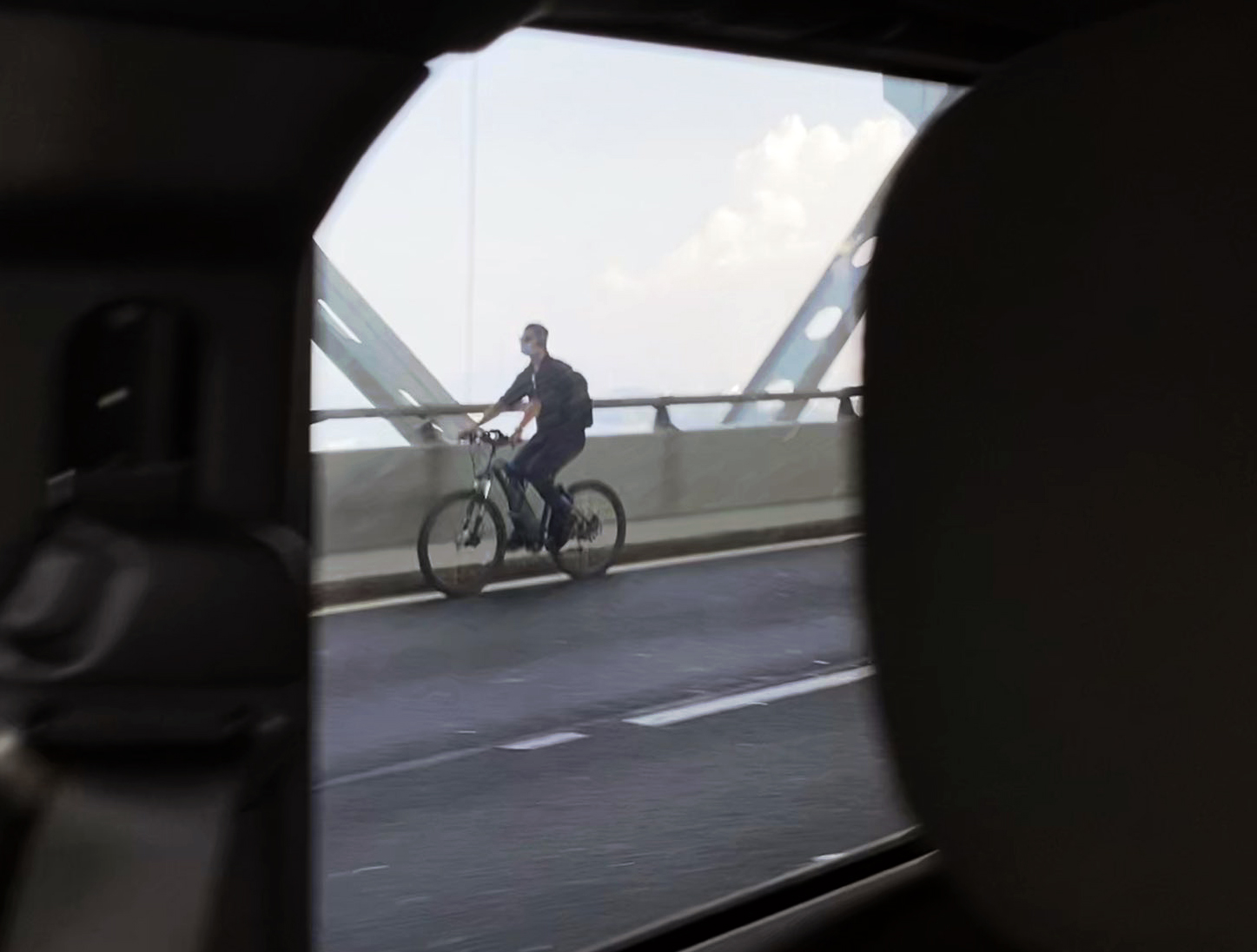He's a rebel with a cause.
Whether he knows it or not, the unidentified bicyclist who took over a lane of the Verrazzano-Narrows Bridge on Wednesday is the latest advocate for fixing one of Robert Moses's greatest mistakes: a celebrated span that connected Brooklyn and Staten Island ... but reserves all 12 lanes for occupants of heavy machines like cars and trucks (a 13th lane is reserved for carpools and buses).
Just saw a guy riding his FUCKIN BICYCLE over the Verrazano bridge lmfaooo pic.twitter.com/65RVmM0aKs
— Don Finesse (@stevequigleyYEW) August 12, 2020
MTA officials told the Staten Island Advance that the anonymous cyclist was a road hazard — but he wouldn't be if the agency was not still fighting the regional trend towards better bike access.
"Thanks to recent Port Authority projects, you can ride today from Staten Island to Elizabeth, N.J. You can ride to Jersey City," said Jon Orcutt of Bike New York, referring to the bike paths on the newly built or rebuilt Goethals and Bayonne bridges. "What you can’t do is ride from Staten Island to Brooklyn. That’s because the MTA refuses to acknowledge ... the huge increase in cycling. The agency’s neglect of cycling is age-old. Before the pandemic, the MTA adopted a $3.3-billion bridge capital program that failed to contain one thin dime for improving bike or pedestrian access."
That cyclist on the westbound lanes might have been new to the roadway, but New York has been down this path for quite some time.
Last May, activists attended an MTA board meeting en masse to protest the "glaring ineptitude" (as one called it) of the agency in failing to provide bridge access to pedestrians and cyclists — something that people started calling for shortly after the bridge opened in 1964.
A key impasse: In 1997, the Department of City Planning commissioned a study by the bridge's own designers Ammann & Whitney, who concluded that bike and pedestrian access could be built for $50 million (in today's dollars). But the MTA didn't move on the suggestion, which would have put a bike/pedestrian path between the suspension wires (as on many bridges, such as the Triboro, George Washington and the Golden Gate).
Then 9/11 happened, and the MTA threw out the unsanctioned study, claiming it is "unacceptable in a post-9/11 security environment," an MTA spokesman told Streetsblog.
By October, 2015, the MTA commissioned its own study from Parsons Brinkerhoff (now WSP), which the agency claims set a $300- to $400-million pricetag for elaborate bike and pedestrian lanes built "outboard" on either side of the lower level (the report itself has never been released). The cost stems from the MTA's belief that the path must "be wide enough to accommodate emergency access/first responder and maintenance vehicles," even though that requirement does not seem to be universal on bridges (except those run by agencies that don't, apparently, want to build bike paths).
The details of the Parsons Brinkerhoff study were not made public, so after that hearing, Streetsblog filed a Freedom of Information Request to get the study and "correspondence between MTA divisions and the FDNY and NYPD about design requirements that those emergency agencies might have said they need for such a path."
Every 20 days or so since our July 18, 2019 FOIL request, we receive the following email from the MTA: "We are presently researching your request and expect to have it completed in approximately twenty (20) business days." More recently, the agency blamed COVID-19 for delays in meeting our demand for a 2015 report that is probably two keystrokes away from our inbox.
Activists are growing frustrated.
"They spent millions on a bike lane feasibility study which they refuse to release. They are raking in $12.25 from each car ... and they can’t spend a few dollars to cordon off a lane for cyclists to cross safely?" said Paul Gertner, who has been demanding to see the study even longer than Streetsblog has. "It's time to hold MTA Bridges and Tunnels accountable."






